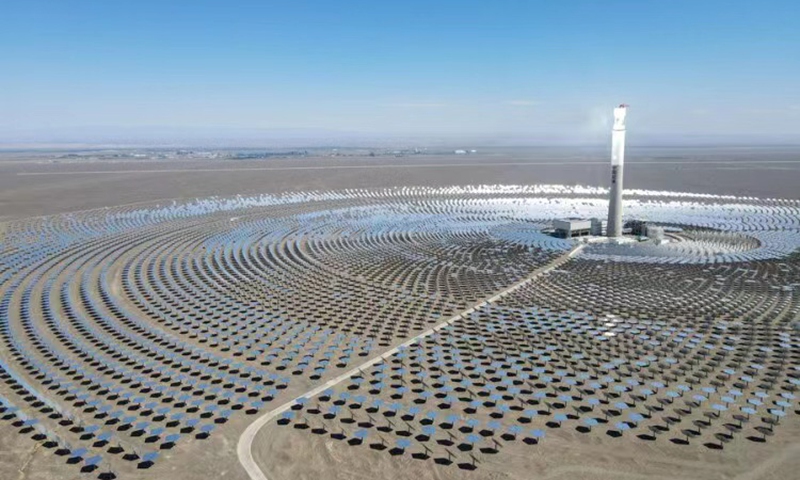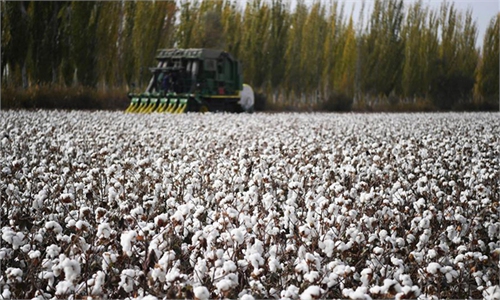Xinjiang's regional economy grows 7% in 2021, with grain output hitting record high

Aerial photo taken on Aug. 22, 2021 shows a photothermal power station in Nom Township of Hami, northwest China's Xinjiang Uygur Autonomous Region.Photo: Xinhua
Northwest China's Xinjiang Uygur Autonomous Region reported better-than-expected economic growth in 2021 despite the ongoing COVID-19 pandemic. The region's stellar economic performance has successfully smashed US smears over alleged human rights violations and the so-called use of forced labor accusations.
Xinjiang's economy expanded 7 percent year-on-year to about 1.6 trillion yuan ($250 billion) in 2021, according to the local government work report delivered to the annual session of the regional legislature, which opened on Sunday.
The three drivers of economy - fixed-asset investment, social retail and foreign trade - increased by 15 percent, 17 percent and 5.8 percent respectively. Value-added output of enterprises above a designated size rose to 456 billion yuan, up 8.8 percent on a yearly basis.
The urban unemployment rate was controlled within 5.5 percent, and the region's major indicators have exceeded their annual targets, said the local government.
Last year also marked Xinjiang's modern agriculture entering a stage of high-efficiency and high-quality development, with total grain output reaching 17.36 million tons, an increase of 9.62 percent on a yearly basis, hitting a record high for the past five years.
Cotton, a major agricultural product in the region, also achieved improvement in quality and efficiency in 2021, with a total output of 5.13 million ton which accounted for 89.5 percent of the country's total, maintaining its top ranking in China for over two decades in terms of total cotton output, per-unit yield, planting area and commodity allocation.
The cotton planting area in Xinjiang in 2021 reached 2.5 million hectares, accounting for 82.8 percent of the national planting area. The cotton yield in the region averaged 136.43 kg per mu, which was 10.26 kg per mu higher than the national average, data from the National Bureau of Statistics revealed.
To strengthen the cotton industry, local government said Sunday that it will accelerate the preparatory work for the establishment of a national cotton and yarn trading center in Xinjiang this year.
"It is necessary to give full play to the advantages of Xinjiang's cotton production, petrochemical and coal chemical industries, vigorously develop spinning, weaving, printing and dyeing and clothing industries, and strive to build the entire cotton industrial chain," the regional government said.
In early 2021, Swedish clothing retailer H&M's refusal to use Xinjiang cotton led to a widespread consumers boycott in China of the brand, which has seen Chinese consumers strike back at a handful of foreign clothing brands banning Xinjiang-sourced cotton. Sportswear giants Nike and Adidas were also among the brands that have quickly gone from popular to undesirable.
In the past year, Xinjiang has taken proactive measures to build itself as a core area of the Silk Road Economic Belt. A record number of 122,10 inbound and outbound China-Europe freight trains passed through Xinjiang in 2021, up 21.5 percent year-on-year, data from the local government work report showed.
Looking forward, Xinjiang set its GDP growth target for 2022 at around 6 percent and value-added output of enterprises above a designated size up by about 6.5 percent.
Global Times



